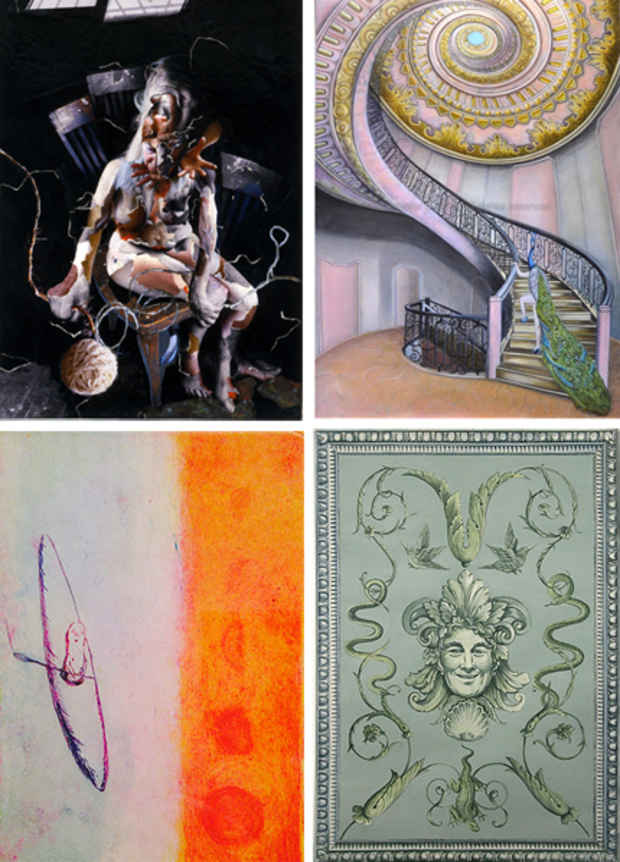“It’s in the Details” Exhibition
Figureworks

This event has ended.
Each of these detailed series have manifested from outside forces and internal struggles. Producing this type of work involves hours of personal focus, insight and decision-making and the results carry emotions that range from whimsical to disturbing.
Narrative painter Jennifer Delilah finely details her multi-species subjects in elaborate and historic environments. Her subject matter challenges ideas of race, class, and gender. In these paintings, beautiful hybrid creatures are bound or oppressed by their captors in lavish, haunting environments. The viewer is drawn in by the alluring subject and landscape only to be reminded that beauty and extravagance can have its price.
Chambliss Giobbi’s figurative collages are objects of obsessive psychological and physical mutation. After an intense photo session between artist and model, Giobbi prints thousands of photographs from which he tears and glues them, piece by piece, layer upon layer, to create a new portrait. Formerly composed subjects now become disturbingly fractured and splintered, opening new windows into the subject’s persona.
Susan Hamburger borrows images and designs from 18th- and 19th-century European decorative and fine arts to address current social, political and economic issues. In this exhibition she has work from two series - a paper-mache tea service of delicate Delft cups and saucers that portray contemporary female politicians and multi-panel paper wall moulding featuring the CEOs of BP, Transocean, Halliburton and Cameron International at the time of the Gulf oil spill in 2010. What is so engaging in Hamburger’s series is the emotional duality it evokes. Her portraits are lovingly detailed and enticing while wrought with conflicting political and social mores.
On more whimsical note, Maho Kino humanizes the common peanut into playful, intimate etchings. Kino feels this simple organic form lends itself readily to personification. On a less obvious level, the peanut represents inherent duality (two nuts in one shell) that acts as a metaphor for the conflict in human character. Kino’s tiny narrative etchings are like peering through a dollhouse window into a newly discovered world where something as mundane as a peanut has become enchanted and treasured.
Media
Schedule
from January 04, 2014 to March 02, 2014
Opening Reception on 2014-01-10 from 18:00 to 21:00
Artist(s)
Jennifer Delilah, Chambliss Giobbi, Susan Hamburger, Maho Kino